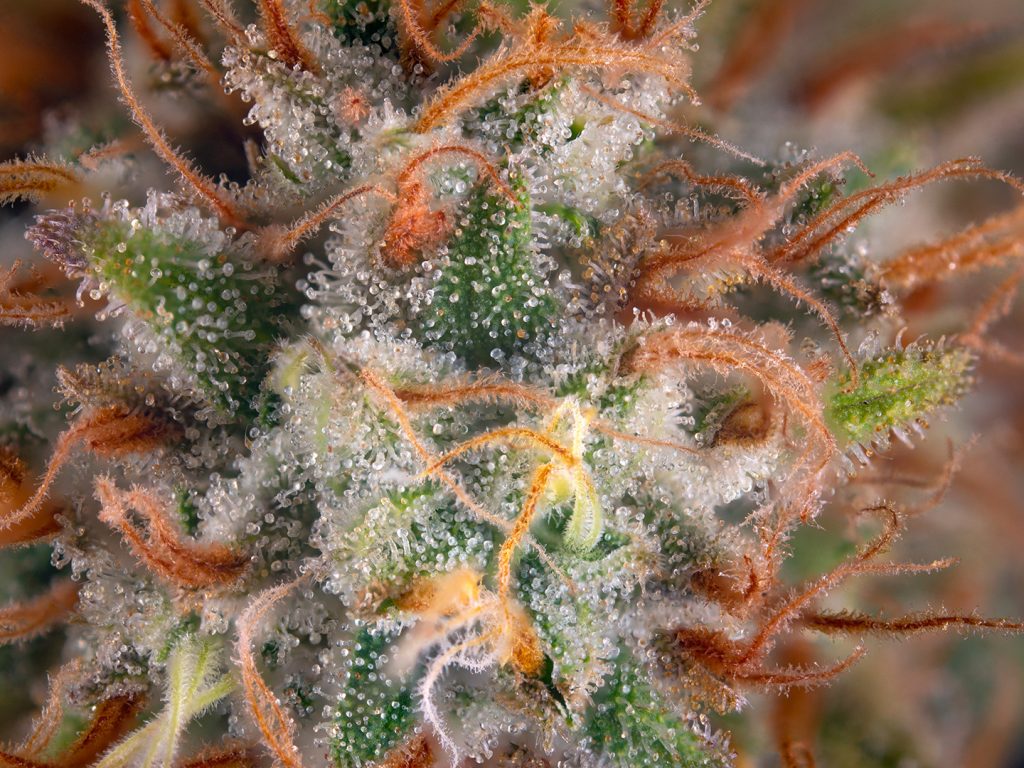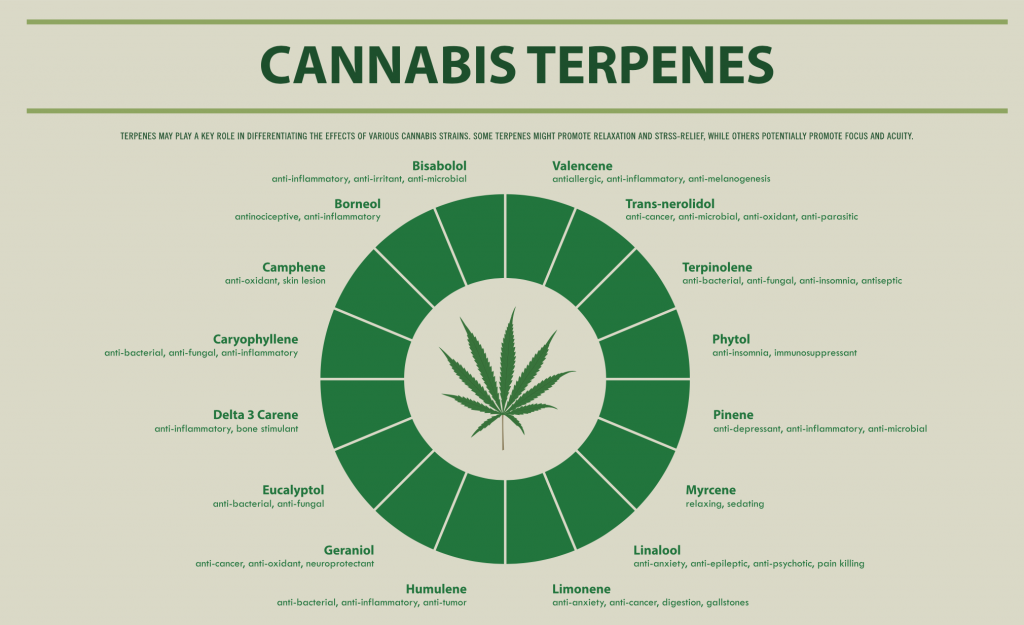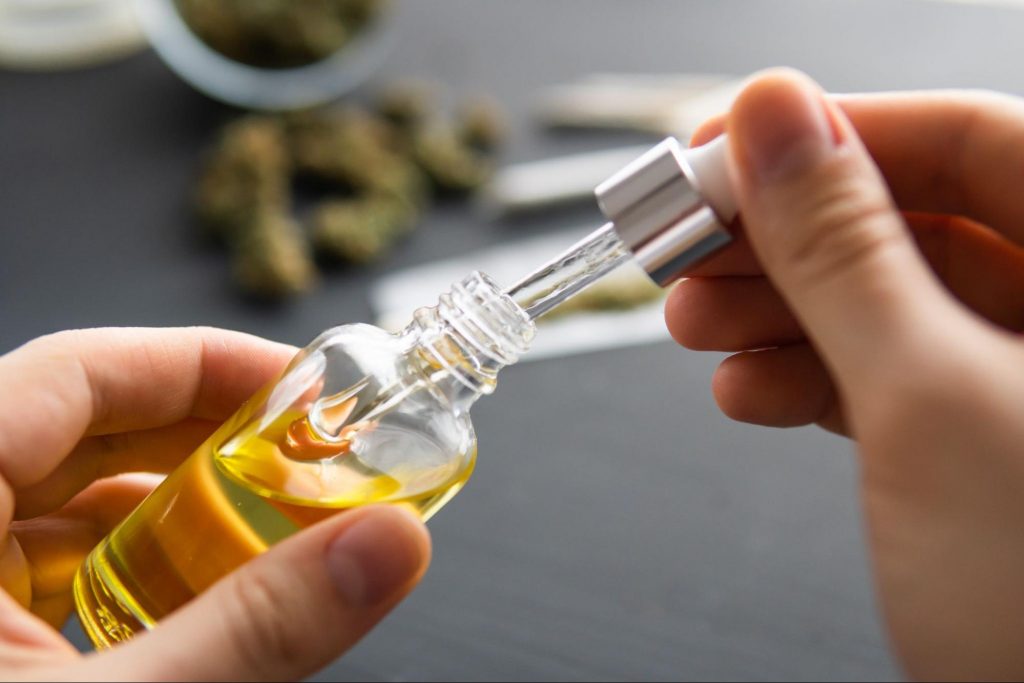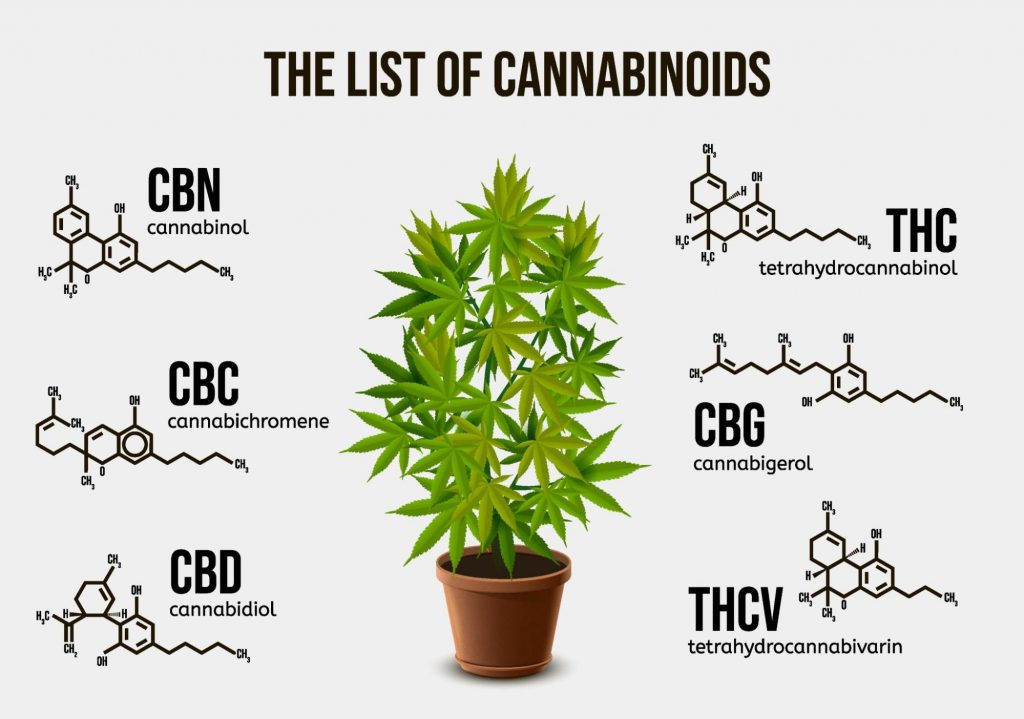When discussing the effects and characteristics of different cannabis strains, we often refer to cannabinoids, or the percentages of THC, CBD and other cannabinoids they contain. But there is another lesser-known compound that has an important role in the aromas, flavors and effects produced by the cannabis plant: terpenes.
Terpenes are chemical compounds that occur naturally in plants and some animals. They are best known for producing the scents, tastes and even colors of different vegetation—for example, the varying smells and tastes associated with different cannabis strains—but they also help protect plants by repelling predators like animals, fungi and insects.
Terpenes are produced in the trichomes of the cannabis plant, or the crystals on the leaves and buds. More than 100 terpenes have been identified in cannabis. The compound is also commonly found in citrus fruits and aromatic herbs.

The truth is, there are still a lot of unknowns about how terpenes work within the human body. It is thought that the dominant terpenes, or terpene profile, of a cannabis strain interact with cannabinoids like THC and CBD to create various effects.
You know how each cannabis strain makes you feel a little bit different—for instance, one might be relaxing, and another, a bit more energizing? While we tend to attribute these effects to a strain’s cannabinoid content (in other words, the percentages of CBD, THC, etc.), some cannabis experts say we should be focusing on the terpene profile instead.
It is believed that terpenes interact with the endocannabinoid system (ECS), working synergistically with cannabinoids to produce what is called “the entourage effect”: a theory that the effects of different compounds are enhanced when they are all consumed together (for instance, as in full spectrum cannabis products).

There are over 100 terpenes that we know of in the cannabis plant. The following is a guide to the five most common, their properties and potential benefits.
1. Myrcene
Scent: earthy
Also found in: hops
Potential benefits: may help with sleep; reducing inflammation and chronic pain; supplement during cancer treatment
2. Limonene
Scent: citrusy, like lemons
Also found in: cosmetics; cleaning products
Potential benefits: mood lifting; may help reduce stress; antifungal and antibacterial properties
3. Linalool
Scent: spicy, floral
Also found in: lavender, mint, cinnamon, coriander
Potential benefits: sleep and relaxation, arthritis, seizures, insomnia, depression, cancer treatment
4. Caryophyllene
Scent: spicy, peppery
Also found in: black pepper, cinnamon, cloves, oregano, basil and rosemary
Potential benefits: anti-inflammatory properties; pain and anxiety relief; reducing symptoms of alcohol withdrawal
5. Pinene
Scent: wood, pine
Also found in: pine trees and needles, rosemary, basil and parsley
Potential benefits: treating ulcers, anxiety, asthma, chronic pain; may counteract the effects of THC in certain pinene-dominant strains
Schedule a medical cannabis evaluation with one of our certified physicians to learn more about how terpenes can affect your body.
You can also book an appointment to apply for a medical marijuana card. We’ll answer any questions you have and make the process as easy as possible!
Studies show that cannabis may be helpful for numerous conditions, from nausea and chronic pain to neurological disorders. If you already have a medical marijuana prescription, you know this on a personal level.
But have you ever wondered exactly how it works? The answer involves the many compounds, called cannabinoids, that occur naturally in the cannabis plant.

Most are familiar with THC (tetrahydrocannabinol) and CBD (cannabidiol), the two most studied cannabinoids due to their prevalence—the rarer a cannabinoid, the more difficult it is to isolate. In reality, there are over 100 cannabinoids in the cannabis plant, most of which we know little about.
Scientists are beginning to study some of the rarer cannabinoids, offering insight into their potential benefits. Research strongly suggests cannabinoids might:
Cannabinoids work by interacting with your body’s endocannabinoid system (ECS), which regulates things like:
In order to do its job, the ECS uses two types of cannabinoid receptors: CB1, in the central nervous system, and CB2, in the peripheral nervous system. When you consume marijuana, cannabinoids from the plant interact with these receptors to create various effects in your body.

The two best known and most abundant cannabinoids, THC and CBD have inspired a wide range of products in the cannabis industry thanks to their many effects and potential benefits.
These compounds have one key difference: THC is psychoactive, producing the “high” associated with marijuana, while CBD is not.
Both cannabinoids may be helpful for a range of conditions, and many of these overlap, such as the treatment of pain, nausea and anxiety. CBD is also used for depression and other mental disorders, seizures and migraines, while THC may be used for glaucoma, muscle spasticity and to increase appetite.
Outside of THC and CBD, we are beginning to learn a bit more about a handful of other cannabinoids. Research on these rare cannabinoids is limited, but the following is what we know thus far.
A non-intoxicating cannabinoid, CBG is becoming better known for its antibacterial properties, which may be helpful for digestive conditions, as well as its ability to relieve pain and inflammation.
CBN is also non-intoxicating and occurs in cannabis sativa strains that are high in THC and CBD. Studies show that it may be beneficial for neurological disorders and increasing appetite. It may also be helpful for sleep, but research is still in its infancy.
The limited information we know about CBC suggests that it may help regulate pain and contribute to brain health, without producing intoxicating effects. It also appears to have a role in the entourage effect, a theory that the effects of cannabinoids are enhanced when used together.
CBDV is structurally similar to CBD and is best known for its antiepileptic properties. It also might be helpful for pain, inflammation, and neurological disorders.
CBGV is an analog of CBG, in other words, a very similar chemical compound. While studies are limited, it shows promise for digestive health, antibacterial properties and glaucoma treatment. Additionally, it may have the unique ability to increase the bioavailability of CBD.

Schedule a medical cannabis evaluation with one of our certified physicians to learn more about how you could benefit from cannabinoids.
You can also book an appointment to apply for a medical marijuana card. We’ll answer any questions you have and make the process as easy as possible!